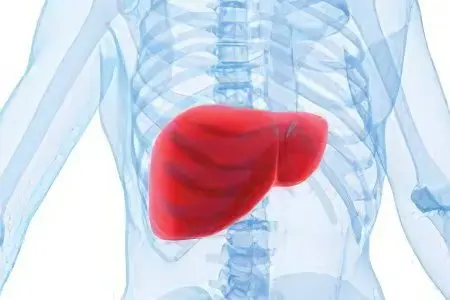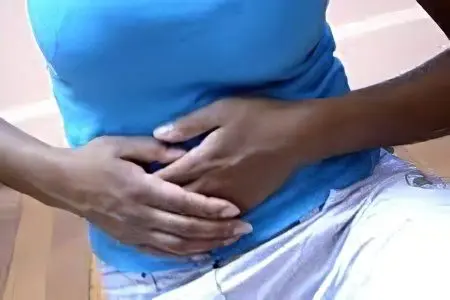Contents
The human body is arranged in such a way that all organs can be divided into vital and auxiliary. The liver clearly belongs to the first group. Its importance for maintaining the viability of the organism cannot be overestimated. After all, it is a powerful parenchymal organ that combines the functions of the digestive gland and a kind of biochemical laboratory.
It is here that all the central biochemical reactions and processes responsible for maintaining life take place. Naturally, the more complex the structure of an organ and the higher the load on it, the more vulnerable it is. And despite the excellent regenerative and regenerative abilities of the liver, the number of its diseases, turning into liver failure, continues to grow steadily.
Where is the human liver located?

Like all vital organs, the liver is located in the central regions of the body. It occupies virtually the entire upper right section of the abdominal cavity, being under the diaphragm. The main mass of the organ is fixed by ligaments under its right dome, which is projected onto the anterior abdominal wall as the region of the right costal arch and hypochondrium. From this section, the liver goes to the left, gradually narrowing until the edges are completely connected at an acute angle in the form of a wedge closer to the left hypochondrium. Therefore, if there are problems with the liver, patients complain of pain or discomfort in the right hypochondrium with a possible spread to the epigastrium.
Functions of the liver in the human body
As many functions as the liver performs, no organ in the human body provides. These include:
Detoxification of the body – neutralization of all toxic compounds that enter the bloodstream from the environment (alcohol, toxins, medicines);
Utilization and inactivation of toxic metabolic products formed in the body during life (protein breakdown products, phenol, ketone compounds and acetone);
Participation in vitamin and mineral metabolism: deposition of water-soluble vitamins of groups B, C, PP, as well as fat-soluble D, E, K, trace elements of iron, copper and cobalt;
Participation in the synthesis of steroid sex, thyroid, adrenal hormones and neutralization of their excess;
Regulation of carbohydrate metabolism;
Deposition and distribution of energy substrates in the body (glucose, glycogen) through the processes of glycogenolysis, gluconeogenesis, glycolysis;
Participation in lipid metabolism (metabolism of cholesterol, phospholipids, fatty acids, lipoproteins);
Implementation of the central processes of protein metabolism: synthesis of protein components for cell membranes and transport proteins, redistribution of amino acids;
Participation in the synthesis of immunogobulins, antibodies and other important proteins of the immune system;
Synthesis of plasma coagulation factors and anticoagulant blood system;
The function of hematopoiesis, especially in the prenatal and childhood period;
Synthesis of bile and enzymes that are involved in the processes of digestion. Their main role is the breakdown of fats;
The implementation of bilirubin metabolism and its neutralization by conjugation with glucuronic acid;
Deposition of blood, which allows redistributing it in case of need (ejection of blood into the vessels in case of its deficiency during blood loss or concentration in case of congestive heart failure);
liver disease
The group of hepatic diseases can include any type of damage to all structures that do not go beyond the anatomical limits of this organ. These can be hepatocytes and hepatic lobules that they form, intrahepatic arterial and venous vessels, and bile ducts. Diseases of the extrahepatic bile ducts and gallbladder should be treated as a separate rubric.
The main common liver diseases are shown in the table:
Group of liver diseases | Nosological units from the group |
Primary inflammatory, purulent and functional damage to liver cells |
|
Traumatic injury |
|
Vascular diseases |
|
Damage to the intrahepatic bile ducts |
|
Tumor diseases |
|
Parasitic infestations and infections |
|
Hereditary pathology and anomalies |
|
Liver damage in pathology of other organs |
|
Structural and functional rearrangements in the liver and their complications |
|
autoimmune liver disease | Pathology in which there is an unreasonable destruction of the liver by its own immune system:
|
Signs and symptoms of liver disease

Symptoms of liver disease are frequent nausea, heartburn, a very unpleasant, pungent odor of sweat, yellowish skin color, dark yellow urine, diarrhea, discoloration of feces to dark brown or light yellow, sometimes green.
Also, liver disorders can lead to acne in adulthood, frequent hunger or strong and frequent thirst, itching of some thin skin areas, and visual impairment. For example, a person may begin to confuse white with yellow, suddenly feel either cold or hot, not sleep at night, while experiencing fever, heart palpitations. Hair and eyebrows may begin to fall out. There are convulsions, papillomas are formed, the development of atherosclerosis of the brain, heart, intestines, vessels of the legs begins.
Typical cases of problems with the liver of an organic and functional plan are recognized without difficulty by characteristic symptoms. But some situations make it difficult for even experienced hepatologists (specialists dealing with liver diseases) to make a correct diagnosis. It all depends on the specific type of disease, the individual characteristics of the organism, the presence or absence of concomitant pathology.
The main clinical manifestations of hepatic pathology can be:
Discomfort and pain in the projection of the liver;
Enlargement of the liver in size;
General weakness and malaise;
Headache;
Violation of mental and mental abilities;
Increased skin sweating and swelling;
Yellowness of the skin and sclera;
Skin rash;
Severe itching of the skin;
Increased fragility of blood vessels and a tendency to bleeding;
Signs of hypovitaminosis;
Instability of the stool, change in the nature and color of feces;
An increase in the size of the abdomen;
Reinforced venous pattern on the skin of the abdomen;
Unmotivated weight loss;
Bitterness in the mouth;
Cracks on the surface of the tongue and its coating with a white or brown coating;
Temperature reaction of varying severity.
[Video] Dr. Berg – Can feet tell about liver disease?
What foods are allowed for liver diseases
The following products are allowed for liver diseases:
Beverages. A decoction of rose hips, weak black tea with lemon, milk. Instead of sugar, substitutes (xylitol) can be used. Juices from berries and fruits without sugar. Compotes are prepared from dry and fresh fruits, grinding them.
Rye or bran bread, or yesterday’s wheat bread (or stale), biscuit, biscuit type cookies;
Lean meat products. Turkey meat, beef, rabbit, chicken are recommended. It is better to remove the peel from poultry meat;
Low-fat varieties of fish. Attention is focused on pike perch, pike, cod, all low-fat varieties of river fish;
Oils. Refined vegetable oils (up to 10 g) and butter (up to 10-30 g) are allowed;
Low fat dairy products. It can be curdled milk, low-fat or low-fat cottage cheese, not spicy cheeses. Kefir and milk can only be fat-free, the maximum amount of fat should not exceed 2%. You can diversify the menu with cheesecakes, lazy dumplings, puddings.;
Eggs. The recommended number of eggs per day is only one. It can be eggs of any kind of bird;
Vegetable dishes are best prepared from potatoes, pumpkins, cauliflower, zucchini, carrots and beets. Green peas and Beijing cabbage will perfectly complement the menu. Vegetables can be boiled, grated and made soup-puree, soufflé, casseroles with meat and fish. In a small amount, salads with a neutral taste (corn, iceberg, romaine) are welcome. Bulgarian pepper is useful;
You can have any varieties of vermicelli and pasta, buckwheat, rice, oatmeal – everything is boiled;
You can season ready-made dishes with bay leaves, cinnamon, parsley, dill, vanilla. Great for flavoring soy sauce.;
In people with liver pathology, confectionery and sweets should be represented by fruit jam, honey in a small amount, marmalade.
Snacks. The diet for liver disease does not limit the use of fresh vegetable and fruit salads seasoned with refined oil; after boiling, fish is made into aspic, low-fat varieties of herring are soaked, and stuffed fish is made. It is allowed in a small amount, so as not to cause flatulence, sauerkraut without vinegar. From the usual salads: vinaigrette, zucchini in the form of caviar.
How to cook and eat meals?
Any food should be steamed, stewed, baked, boiled. In no case should they be fried and smoked. It can be soup, puree soup, casserole, pudding, puree, just boiled products in their pure form. You can combine allowed foods in salads and stews. Be sure to season them properly. This will provide the body with sodium and chloride ions. Ready meals should be warm before eating. It is better to adhere to the principle of fractional dosed 6 meals a day. This approach will create the most careful attitude to the liver and provide the body with nutrients.
[Video] Dr. Berg – Top 7 Liver Detox Foods:
Which doctor to contact?
A doctor who treats the liver – gastroenterologist (gastroenterologist), hepatologist (if you have hepatitis)









